An URBACT Guidebook for the Reactivation and Reuse of larger vacant buildings
Edited on
26 April 2018The challenge of 2nd Chance is the re-activation of vacant buildings and building complexes for a sustainable urban development. In many European cities smaller and larger derelict sites, underused premises, so called “voids” can be found in or near the city centre. Eleven cities have been working for years on that topic with great results, in the Urban Guidebook for the Reactivation and Reuse of larger vacant buildings, that is one of the main final outputs produced by the 2nd Chance Network you can find the lessons learned from the 2nd Chance Network!
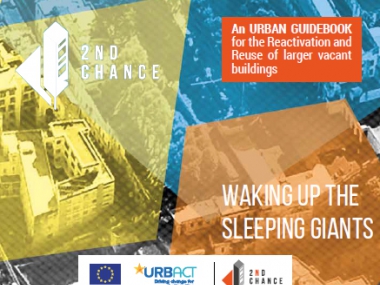
"During 2 years and a half of work, the Network’s Partner cities have been exchanging, learning and experimenting new tools and action to make this dream come true and the knowledge generated during this journey has been captured and collected in this Guidebook thanks to the pro-active contribution of Nils Scheffler as Project’s Lead Expert." The words of the coordinator of the project Nicola Masella introduces to the experience held in the Network and summarized in this useful tools, that we hope will be adopted by each city in their daily challenges with the strategies of reactivation of the sleeping giants!
The Urban Planning Councilor and responsible for the coordination of the project within the City Council of Naples Carmine Piscopo says that "the project 2nd Chance - Wake up The Sleeping Giants was born with the spirit of empower the work of social valorization of public heritage that this Administration has started a long time ago.
An enhancement that does not end in its economic dimension, quantifiable in monetary terms, but takes into account other indicators, such as the benefit of use and the value of services that the reactivation of a good has on the territory and on a specific community. The promotion of practices of reuse of public buildings as a common good, in order to promote the civic use of space, as well as the cultural, social and economic development of the city, falls within the objectives of the project of which Naples is the leading city". In this spirit the eleven Partners of 2nd Chance have been developed during two years and an half the strategies for the reactivation of their vacant buildings.
In many European cities smaller and larger vacant, rundown buildings and sites can be found.
Some of them have been abandoned for years, are unsafe and present a public security hazard. At the same time they present a great opportunity for the sustainable urban development, in particular larger ones.
For this reason, 11 city partners from all over Europe have joint the URBACT 2nd Chance Network to develop local reactivation strategies for larger, degraded vacant building or building complex as a pilot project in their town. The joint aspiration was to reactivate those “sleeping giants” and implement uses, not only oriented on private exploitation interests, but also on the interests of the common good and to take advantage of the opportunities the reactivation of these larger vacant buildings can provide.
The lessons learned from this Network are condensed in this guidebook.
The general opportunities and benefits the reactivation of larger, vacant buildings can provide are presented in chapter 2. They can be achieved in particular through the reutilisation of the empty spaces for needed economic, social and cultural functions. These functions can be anchors and initiators for the socio-economic and cultural regeneration of neighbourhoods and the improvement of the quality of life (depending on the size and use of the building). To take advantage of these opportunities it needs strategies and policies for the reactivation of abandoned buildings and sites.
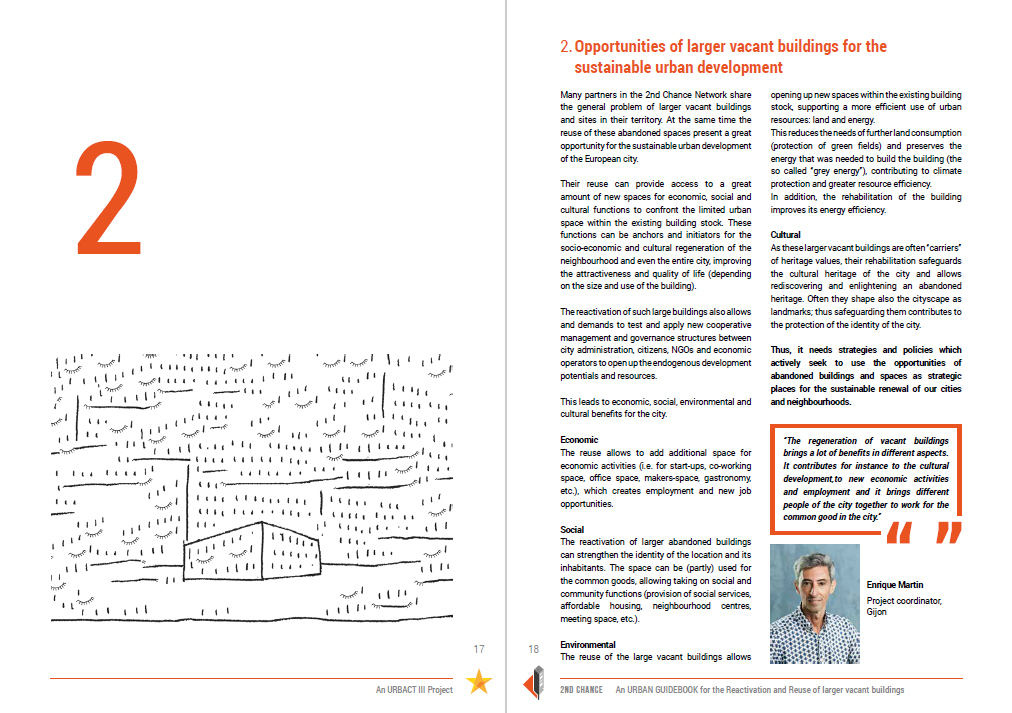
Thus, chapter 3.1 presents six key activities that have been identified by the 2nd Chance partners as crucial to start off the reactivation process of larger, abandoned buildings.
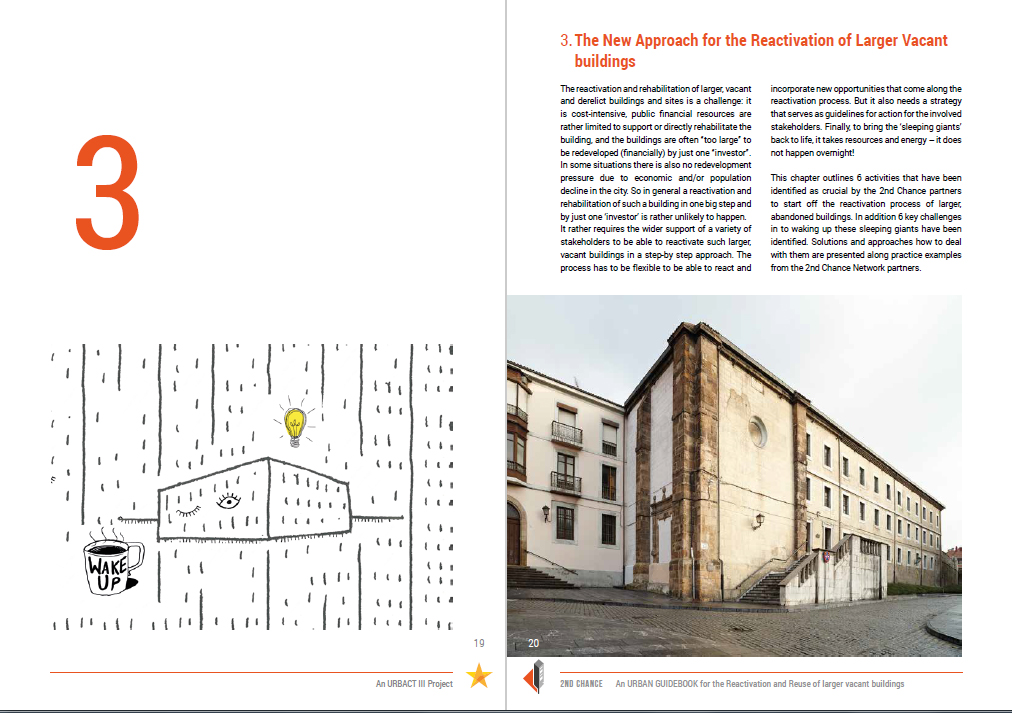
These key activities are:
1. Understanding the current state of the building and its history
2. Making stakeholders and citizens aware of the building
3. Opening the building
4. Engaging stakeholders in the reactivation process
5. Developing a reactivation strategy embedded in the city development strategy
6. Checking for alternative financial resources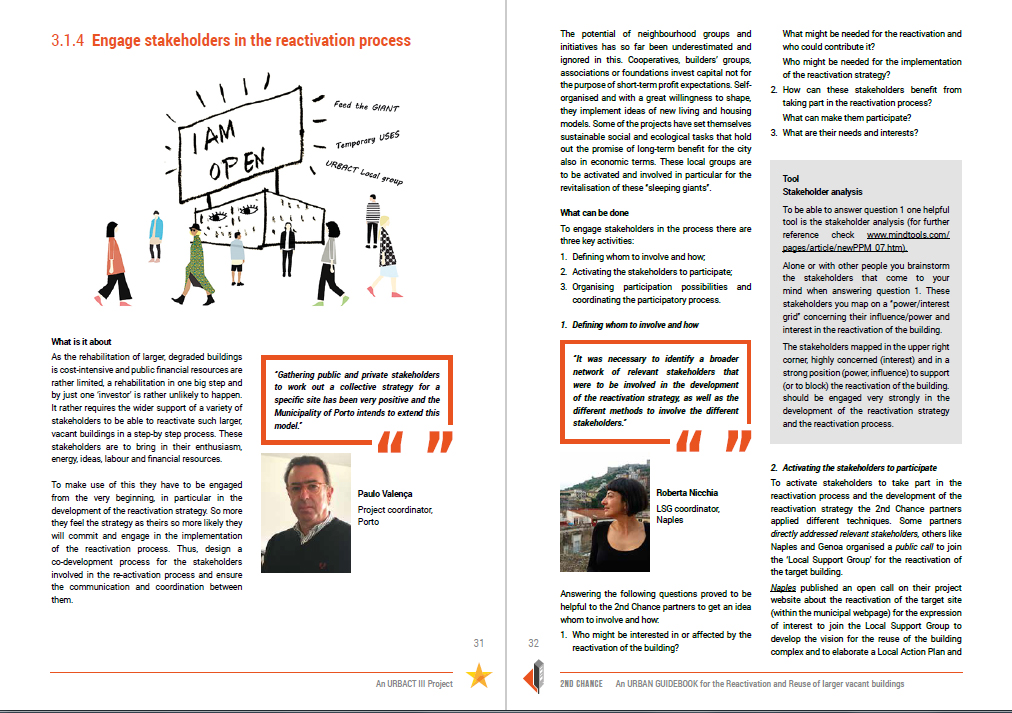
However, as the reactivation and rehabilitation of larger, vacant and derelict buildings and sites is also cost-intensive, public financial resources are rather limited and the buildings are often “too large” to be redeveloped (financially) by just one “investor” and in ine big step, ‘waking up these sleeping giants’ is also a great challenge.
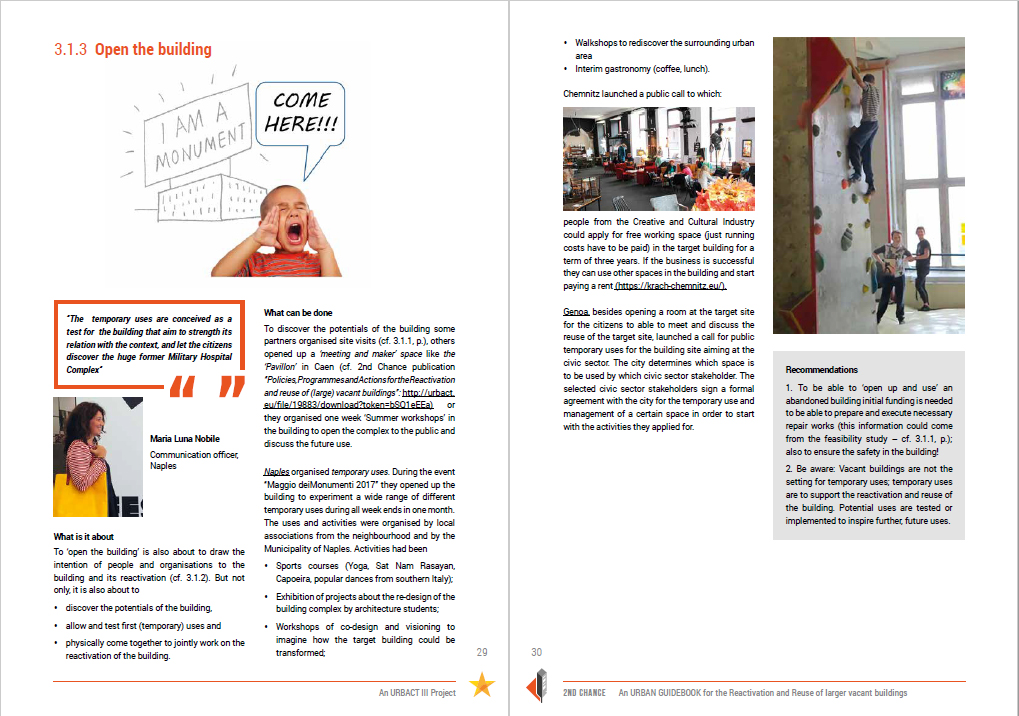
Thus, chapter 3.2 outlines solutions and approaches how to deal with six key challenges based on the experience of the 2nd Chance Network partners. Key challenges are:
1. Adaptability of the building to current standards and requirements
2. City is not the owner and limited willingness or possibilities of the owner to invest
3. Degraded state of the building and limited financial resources for the reactivation and rehabilitation
4. Defining new functions and uses
5. Activating and involving politicians in the reactivation process
6. Managing the reactivation process and future use of the building
Enjoy the reading and the reactivation of your Sleeping Giants following our
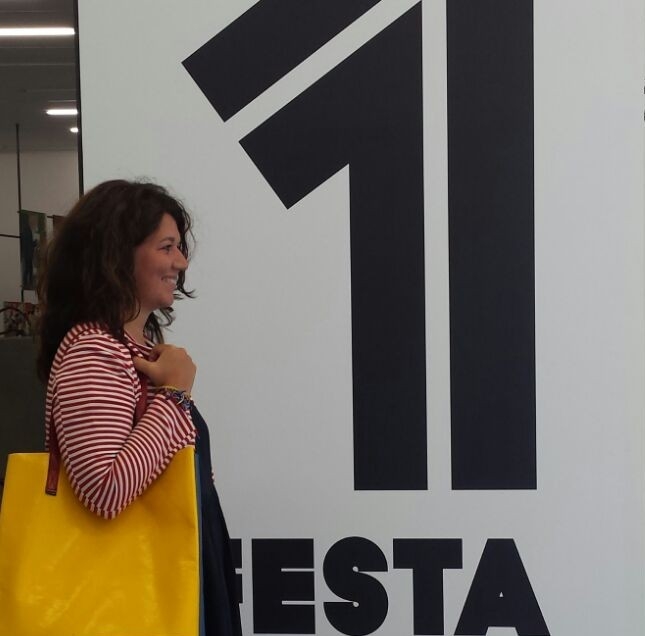 Submitted by m.luna nobile on
Submitted by m.luna nobile on
